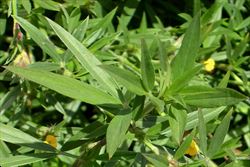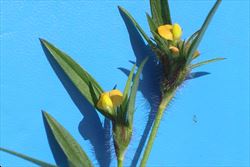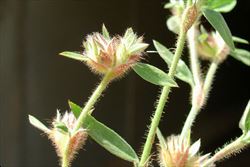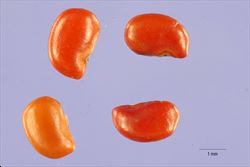Click on images to enlarge

habit (Photo: Chris Gardiner)

stems, leaves and flower clusters (Photo: Chris Gardiner)

close-up of leaves with three elongated leaflets (Photo: Chris Gardiner)

close-up of flowers and relatively thin stems covered in spreading reddish-coloured bristles (Photo: Chris Gardiner)

close-up of immature fruit and relatively thin bristly stems (Photo: Chris Gardiner)

close-up of seeds (Photo: Tracey Slotta at USDA PLANTS Database)
Scientific Name
Stylosanthes guianensis (Aubl.) Sw.
Synonyms
Stylosanthes guianensis (Aubl.) Sw. var. guianensisStylosanthes guianensis (Aubl.) Sw. var. intermedia (Vogel) Hassl.Trifolium guianense Aubl.
Family
Fabaceae (Queensland, the ACT, Victoria, Tasmania, and the Northern Territory)Fabaceae: sub-family Faboideae (New South Wales)Leguminosae (South Australia)Papilionaceae (Western Australia)
Common Names
Brazilian lucerne, common stylo, Cook stylo, fine stem stylo, fine-stem stylo, Nigerian stylo, stylo, tropical lucerne
Origin
Native to Mexico, Central America (i.e. Belize, Costa Rica, El Salvador, Guatemala, Honduras, Nicaragua and Panama) and tropical South America (i.e. French Guiana, Guyana, Surinam, Venezuela, Brazil, Bolivia, Colombia, Ecuador, Peru and Paraguay).
Naturalised Distribution
Widely naturalised in northern Australia (i.e. in northern and eastern Queensland, in the north-western parts of the Northern Territory, and in the northern and north-western parts of Western Australia).
Naturalised elsewhere in tropics, including on several Pacific islands (i.e. the Cook islands, Hawaii, New Caledonia, Niue and Palau).
Notes
Common stylo (Stylosanthes guianensis) is regarded as an environmental weed in northern Queensland, Western Australia and the Northern Territory.

